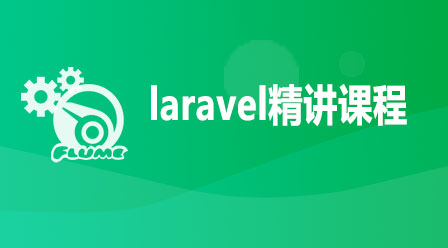
在现代web应用中,邮箱地址是用户身份验证和通信的关键。laravel框架提供了强大的内置验证功能,能够轻松检查邮箱的格式(如email规则)和域名是否存在(通过mx记录验证)。然而,这些基础验证并不能保证邮箱地址是“真实存在”且“可投递”的。一个格式正确、域名有效的邮箱,可能实际上已经停用、不存在或是一个一次性邮箱,这会导致注册失败、通知无法送达、垃圾邮件增多以及用户体验下降。
为了解决这一问题,我们需要一种更深层次的验证机制,能够判断邮箱是否在现实世界中活跃且可达。这通常需要借助外部的邮箱验证服务API。
外部邮箱验证API专门用于对邮箱地址进行深度分析,包括但不限于:
本文将以 Trumail 作为示例。Trumail 提供了一个简洁的API接口,可以查询邮箱的详细信息,其中一个关键字段是 deliverable,它会指示该邮箱是否真实可达。
Trumail API的基本请求格式如下: https://api.trumail.io/v2/lookups/<format>?email=<email>
其中:
API响应会包含多个字段,我们需要关注 deliverable 字段。如果其值为 true,则表示该邮箱是真实可达的。
为了在Laravel应用中优雅地集成Trumail或其他类似服务,我们通常会创建一个专门的服务类来处理API调用,并将其封装成一个自定义的验证规则。
首先,我们创建一个服务类来封装对Trumail API的调用。我们将使用Laravel内置的 Http 门面(基于Guzzle HTTP客户端)来发送HTTP请求。
创建一个新文件 app/Services/EmailVerificationService.php:
<?php
namespace App\Services;
use Illuminate\Support\Facades\Http;
class EmailVerificationService
{
/**
* Trumail API的基础URL
* @var string
*/
protected $baseUrl = 'https://api.trumail.io/v2/lookups/json';
/**
* 验证邮箱是否真实可达
*
* @param string $email 待验证的邮箱地址
* @return bool
*/
public function verify(string $email): bool
{
try {
// 发送GET请求到Trumail API
$response = Http::timeout(5)->get($this->baseUrl, [
'email' => $email,
]);
// 检查HTTP请求是否成功
if ($response->successful()) {
$data = $response->json();
// 返回deliverable字段的值
return (bool) ($data['deliverable'] ?? false);
}
// 如果请求不成功,记录错误并返回false
\Log::error("Trumail API request failed for email: {$email}. Status: {$response->status()}");
return false;
} catch (\Exception $e) {
// 捕获网络错误或其他异常
\Log::error("Exception during Trumail API call for email: {$email}. Error: {$e->getMessage()}");
return false;
}
}
}在上面的代码中:
接下来,我们创建一个Laravel自定义验证规则,将 EmailVerificationService 集成进去。 使用 Artisan 命令生成规则文件:
php artisan make:rule RealEmailExists
这将会在 app/Rules 目录下创建一个 RealEmailExists.php 文件。修改该文件内容如下:
<?php
namespace App\Rules;
use Closure;
use Illuminate\Contracts\Validation\ValidationRule;
use App\Services\EmailVerificationService; // 引入我们创建的服务
class RealEmailExists implements ValidationRule
{
protected $emailVerificationService;
public function __construct(EmailVerificationService $emailVerificationService)
{
$this->emailVerificationService = $emailVerificationService;
}
/**
* 确定验证规则是否通过。
*
* @param string $attribute
* @param mixed $value
* @param \Closure $fail
* @return void
*/
public function validate(string $attribute, mixed $value, Closure $fail): void
{
// 调用EmailVerificationService来验证邮箱
if (!$this->emailVerificationService->verify((string) $value)) {
$fail('The :attribute is not a real and deliverable email address.');
}
}
}在 RealEmailExists 规则中:
现在,您可以在任何Laravel的验证逻辑中使用这个自定义规则了。例如,在控制器中:
<?php
namespace App\Http\Controllers;
use Illuminate\Http\Request;
use App\Rules\RealEmailExists; // 引入自定义规则
class UserController extends Controller
{
public function register(Request $request)
{
$request->validate([
'name' => ['required', 'string', 'max:255'],
'email' => ['required', 'string', 'email', 'max:255', 'unique:users', new RealEmailExists()],
'password' => ['required', 'string', 'min:8', 'confirmed'],
]);
// 如果验证通过,则处理用户注册逻辑
// ...
return back()->with('success', 'Registration successful!');
}
}或者在表单请求中 (app/Http/Requests/RegisterUserRequest.php):
<?php
namespace App\Http\Requests;
use Illuminate\Foundation\Http\FormRequest;
use App\Rules\RealEmailExists; // 引入自定义规则
class RegisterUserRequest extends FormRequest
{
/**
* 确定用户是否有权发出此请求。
*/
public function authorize(): bool
{
return true;
}
/**
* 获取应用于请求的验证规则。
*
* @return array<string, \Illuminate\Contracts\Validation\ValidationRule|array<mixed>|string>
*/
public function rules(): array
{
return [
'name' => ['required', 'string', 'max:255'],
'email' => ['required', 'string', 'email', 'max:255', 'unique:users', new RealEmailExists()],
'password' => ['required', 'string', 'min:8', 'confirmed'],
];
}
/**
* 获取自定义验证消息。
*
* @return array<string, string>
*/
public function messages(): array
{
return [
'email.real_email_exists' => '您输入的邮箱地址不是一个真实有效的邮箱。',
];
}
}在自定义消息中,real_email_exists 对应的是规则的“snake_case”名称。
性能考量与缓存: 外部API调用会引入网络延迟。对于高流量的应用,频繁调用API可能成为性能瓶颈。可以考虑对已验证的邮箱地址进行缓存(例如,使用Redis或数据库),在一定时间内避免重复调用API。
错误处理与重试机制: 外部API可能因网络问题、服务中断或达到速率限制而失败。
API限制与成本: 许多邮箱验证服务(包括Trumail在更高用量下)都有免费层级限制或需要付费。
隐私与数据安全: 将用户邮箱地址发送给第三方服务进行验证,可能涉及数据隐私问题。
用户体验: API调用可能需要几百毫秒甚至更长时间。在前端,可以考虑在邮箱输入框失去焦点时进行异步验证,或在表单提交时显示加载指示器,避免用户等待过久。
替代方案: 除了Trumail,还有许多其他成熟的邮箱验证服务,如Mailgun、Hunter.io、ZeroBounce、Email Hippo等,它们通常提供更全面的验证功能和更高级的报告。您可以根据项目需求和预算选择最合适的。
通过集成外部邮箱验证API,并在Laravel中封装为自定义验证规则,我们能够显著提升应用中邮箱地址的质量和可靠性。这种方法超越了传统的格式和域名验证,确保用户输入的邮箱是真实存在且可投递的。虽然引入了外部依赖,但通过遵循最佳实践,如缓存、错误处理和性能优化,可以有效地管理这些潜在的挑战,从而构建出更健壮、用户体验更好的Laravel应用。
以上就是利用外部API在Laravel中验证邮箱的真实可达性的详细内容,更多请关注php中文网其它相关文章!

每个人都需要一台速度更快、更稳定的 PC。随着时间的推移,垃圾文件、旧注册表数据和不必要的后台进程会占用资源并降低性能。幸运的是,许多工具可以让 Windows 保持平稳运行。




Copyright 2014-2025 https://www.php.cn/ All Rights Reserved | php.cn | 湘ICP备2023035733号